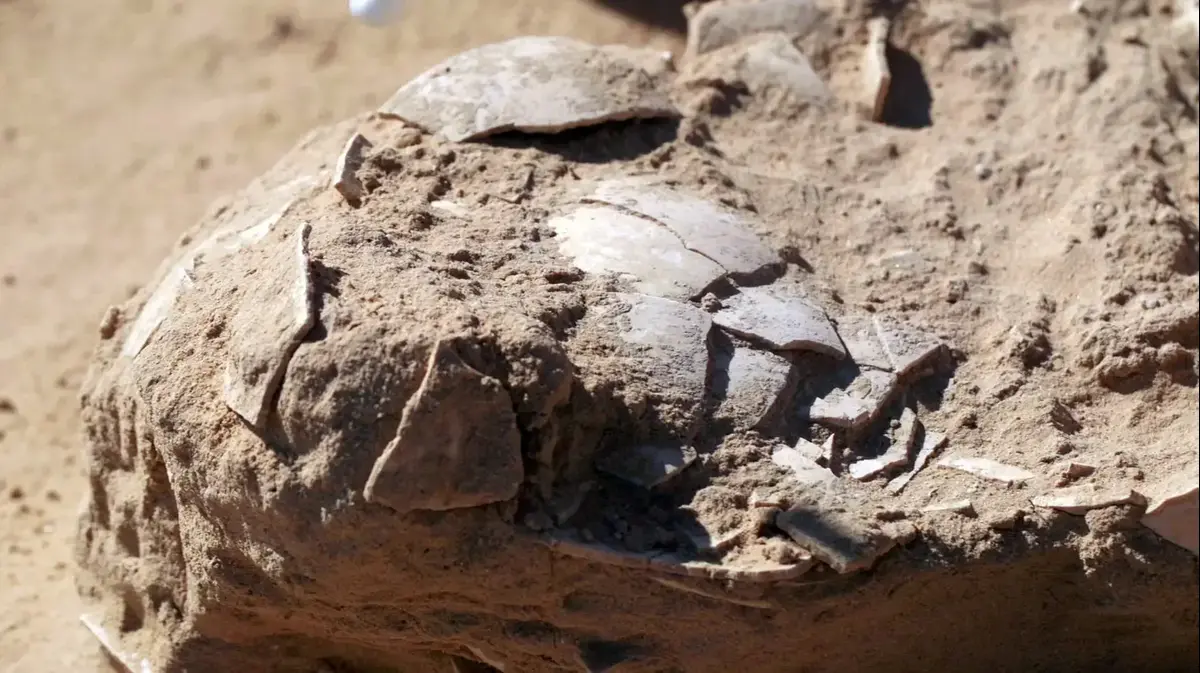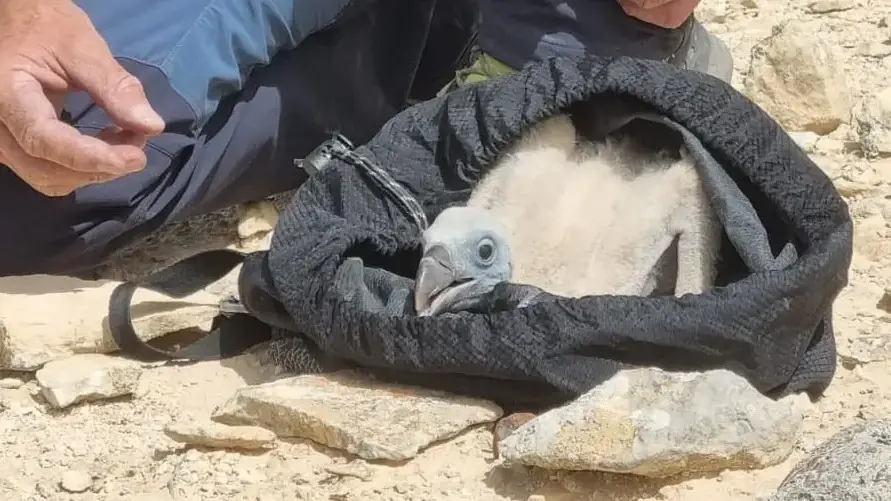He pulled his head out of the ground: an ostrich wanders down the main street (photo: Reuters, editing: Tal Reznik, narration: Liron Barry)
8 ostrich eggs more than 4,000 years old were uncovered in the sands of Nitsana in the Negev, near an ancient fire pit.
The rare discovery, whose initial date ranges from 7,500-4,000 years before our time, was discovered in an archaeological dig by the Antiquities Authority in the agricultural area of the settlement of Beer Milka, as part of the preparation of agricultural land and an initiative of the National Fund for Israel and the Ramat Negev Regional Council.
"We found a parking site, which extends over about 200 m, which was used by desert nomads since prehistoric times," says Lauren Davis, the director of the excavation on behalf of the Antiquities Authority.
"At the site we discovered burnt stones, flint and stone tools, and fragments of pottery, but the truly special find is an assemblage of ostrich eggs. Although the nomads did not build permanent structures, this site certainly makes it possible to feel their presence in the desert. Sites of this type are quickly covered by dunes, and are exposed with movement the sands over the course of hundreds and thousands of years. This fact allowed for the exceptional preservation of the eggs, which are usually not preserved. Now, the excavation has provided us with a glimpse into the life of the nomads who roamed here at that time."
The age of the ostrich eggs ranges between 7,500-4,000 years before our time (Photo: Israel Antiquities Authority, Emil Eljem)
The eggs were covered with dune sand and therefore preserved (Photo: Israel Antiquities Authority, Emil Eljam)
The excavation area in the Nitsana sands (Photo: Israel Antiquities Authority, Emil Eljam)
Ostrich eggs were used as luxury vessels and aquaria for drinking liquids
The ostriches lived in our regions from the early prehistoric times, until their extinction in the 19th century.
Their eggs are found in ancient sites from all periods, a fact that shows that ostrich eggs were an important raw material.
"We find ostrich eggs in archaeological sites related to burials and worship, and also as luxury vessels and as a kind of water for drinking liquids. Of course, they were also used as a source of food: one ostrich egg is equivalent in nutritional value to about 25 normal chicken eggs," says Dr. Amir Gorzalzani from the Antiquities Authority. who researched the subject. "Sometimes, there is even evidence of decoration or engraving on the ostrich eggs - indicating their use as ornamental objects.
It is interesting that, although quite a few ostrich eggs are found in the excavations, the bones of the large chicken hardly appear in the field.
This may indicate that in the ancient world, people preferred not to confront the ostrich and were content with collecting the eggs."
"The proximity of the eggs we uncovered here to the focus of a fire, and the way they were found on the site - in close proximity to each other, indicates that this is not a natural dispersion, but a deliberate collection by people," says Davis.
"One of the eggs was found right inside the center of the fire, a fact that strengthens the argument that it was a gathering for food. As far as we know, this is the first time in archeology that we have signs of cooking an egg in this period. The level of preservation of the site, which is almost on the surface, is rare, and the state of preservation of The eggs, even though they are broken, are also very good."
More in Walla!
Do you eat eggs at the hotel buffet?
You should (very) watch this video
To the full article
Lauren Davis, director of the excavation (photo: Israel Antiquities Authority, Emil Eljem)
Ostrich eggs were an important raw material.
The diggers in Nitzna (Photo: Israel Antiquities Authority, Emil Eljam)
Davis adds that scientific tests after the excavation will be able to add information about the exact age of the site, about the egg-laying season, and more.
"Further on, we intend to reconstruct the whole egg in ghost work, like a puzzle. The whole egg will be able to tell us what the eggs were used for. There are many more things that the ostrich eggs can reveal to us; nowadays it is even possible to check what kind of ostrich it is. For me, every shell is worth gold. I look forward to the research phase in the laboratory. The best is yet to come."
In the right tray are flint vessels, in the left tray are fragments of eggshells (photo: Israel Antiquities Authority, Emil Eljem)
Nowadays it is possible to check which species of ostrich it is.
The remains of one of the eggs (Photo: Israel Antiquities Authority, Emil Eljem)
According to Eli Escozido, director of the Antiquities Authority, the assemblage of ostrich eggs from Milka Well is a fascinating and rare find!
It seems that the ostrich eggs survived because they were covered in the sands of the dunes for a long time, and also because of the relatively arid climate in the area.
The findings will go from the excavation straight to the analytical laboratories at the National Archeology of the Land of Israel, where they will undergo preservation and further research.
tourism
news
Tags
eggs
ostrich
a bud













